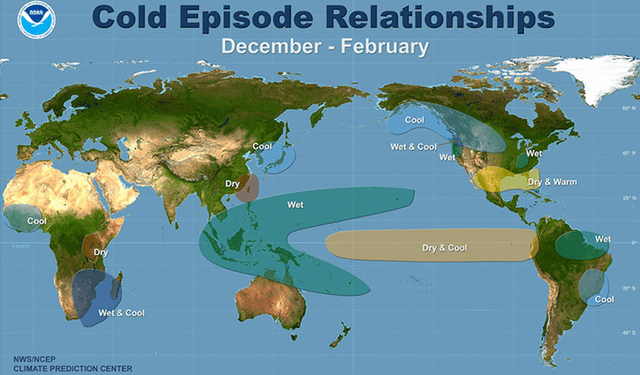What does it mean to be climate neutral? What would it take for our economy and society to become carbon neutral? This is a question many people are asking these days as we become more and more aware of the devastating effects of climate change. In this blog post, we’ll explore what climate neutrality means and discuss some of the challenges and opportunities involved in achieving it. Thanks for reading!
Climate change is one of the most serious global problems we face. The 3rd US National Climate Assessment (NCA) has projected that global temperatures will rise by 2 degrees Celsius, or more, this century, and sea levels could rise as much as 12 feet. If climate change continues unabated, our world will be drastically different than it is today. The impacts are already being felt in communities across the United States and around the world – from droughts causing food shortages to wildfires burning hotter and faster to melting ice sheets raising sea levels.
Climate neutrality means working towards a net-zero greenhouse gas impact through reducing emissions at home, supporting clean energy sources like wind power, solar power, hydroelectricity, and geothermal energy production globally while also capturing carbon through sustainable forestry and agriculture.
- How does sustainability fight climate change?
- How can we achieve climate neutrality?
- How can we eliminate greenhouse gases?
- How can an individual help with climate neutrality?
- How do you achieve climate neutrality?
- What are some examples of how to achieve climate neutrality?
- How is climate neutrality different from other environmental targets?
- How can climate neutrality be achieved?
- What are 3 ways to calculate climate neutrality?
- What exactly is carbon neutrality?
- How can carbon neutrality be achieved?
- How does carbon neutrality make sense?
- What does it take to become carbon neutral?
- What does it mean to be climate-neutral certified?
- Are there any carbon-neutral countries?
- What is the difference between carbon neutrality and climate neutrality?
- How do you make a project carbon-neutral?
- How do you get carbon-neutral energy?
- What is carbon capture storage?
- Are carbon offsets a con?
- What is Climate Neutral and how can I become one?
- What are carbon offsets?
- Why should we go climate-neutral?
- In conclusion on net zero emissions and greenhouse gas emissions
How does sustainability fight climate change?
Sustainability is a key component of fighting climate change because it means reducing our dependence on non-renewable energy sources, like oil, coal, and natural gas. By using renewable energy sources instead, we can mitigate the negative effects of climate change while also reducing our dependence on fossil fuels.
How can we achieve climate neutrality?
Businesses and countries are taking steps to reduce their carbon footprint every day. For example, in 2014 Google achieved net-zero greenhouse gas emissions through the purchase of renewable energy certificates, also known as green tags. Apple is working on a $848 million project to create 200 megawatts of solar energy in Monterey County, California. According to the UN Global Compact, $22 trillion of the world’s $68 trillion in assets are now invested with environmental, social, and governance (ESG) criteria in mind.
With countries like Denmark already generating over 40% of their power from wind turbines and Sweden with 30%, there is no reason why the US can’t follow suit. Denmark also has a goal of becoming independent of fossil fuels by 2050, which is the same year that the United States has committed to hitting net-zero greenhouse gas emissions domestically.
How can we eliminate greenhouse gases?
The world will never truly be rid of greenhouse gases since some are necessary for life on Earth – these include water vapor, carbon dioxide, methane, and nitrous oxide. The good news is that, unlike radioactivity, greenhouse gases are capable of being destroyed naturally – something known as the carbon cycle. While CO2 levels are growing exponentially in the atmosphere due to human activity, oceans absorb approximately one-third of all man-made carbon emissions which helps to mitigate climate change. However, as oceans warm from absorbing more CO2 they become less efficient at absorbing carbon – a process that is already killing off coral reefs around the world.
In order to stop the worst effects of climate change, we have to do our part as individuals and practice sustainable living. We can all drive electric cars, use mass transit whenever possible, reduce the amount of meat we eat, and embrace renewable energy sources like wind, solar, and hydroelectric power.

How can an individual help with climate neutrality?
Climate neutrality means working towards a net-zero greenhouse gas impact by reducing emissions at home, supporting clean energy sources like wind power, solar power, hydroelectricity, and geothermal energy production globally while also capturing carbon through sustainable forestry and agriculture.
Sustainability is a key component of fighting climate change because it means reducing our dependence on non-renewable energy sources, like oil, coal, and natural gas. By using renewable energy sources instead, we can mitigate the negative effects of climate change while also reducing our dependence on fossil fuels. One of the most effective methods of making the world a sustainable place is to make personal changes in your own life. Investors can also use their wallets to invest in companies that demonstrate ESG practices.
How do you achieve climate neutrality?
Climate neutrality is achieved when the greenhouse gas (GHG) emission associated with an activity meets or beats the GHG emission reductions that would have occurred if the same activity were carried out without taking any action.
What are some examples of how to achieve climate neutrality?
The city of Copenhagen’s ambition to become carbon neutral by 2025 can form an example of how to achieve climate neutrality. Copenhagen aims to achieve its goal with the help of 100% renewable energy by 2025, reducing GHG emissions by 40% in 2020 compared to 1990 levels and focusing on industrial processes, district heating systems, fuel consumption for transport, waste management, and purchasing practices that support low carbon solutions.
Climate neutrality differs from other environmental objectives as it aims for zero net emissions…
How is climate neutrality different from other environmental targets?
Climate neutrality is a high ambitious goal that requires a long-term strategy and action plan to achieve. Climate neutrality differs from other environmental objectives as it aims for zero net emissions instead of just slowing down the increasing GHG emissions. In contrast to climate neutrality, many other environmental targets focus on reducing negative impacts which may not require zero net emission.
How can climate neutrality be achieved?
Climate neutrality is typically achieved by reducing the GHG emissions of an activity, compensating for residual GHG emissions, or purchasing green certificates. The reduction of GHG emissions is done through carbon offsets. Carbon offsets are reductions in GHG emissions that are made by an entity in order to compensate for or to offset their own GHG emissions. Purchasing carbon offsets will achieve the same effect.
What are 3 ways to calculate climate neutrality?
The carbon footprint is used as a tool for calculating climate neutrality and it is determined by:
1) what do you want to achieve with climate neutrality, whether it’s zero net emission, compensating for residual emission, or purchasing green certificates
2) if you want to calculate an individual person, a school, university, or business and
3) how many grams of carbon dioxide equivalents per kilogram (gCO2e/kg) do you want to use in your calculation?
What exactly is carbon neutrality?
Carbon neutrality is when an organization, business, or person claims to be responsible for balancing their total climate change emissions with carbon removal. This means that they are taking steps to reduce (and ideally eliminate) the net amount of greenhouse gases entering the atmosphere. In short, carbon neutrality is a way of compensating for one’s high carbon emissions.
The good news is that carbon neutrality is an achievable goal for companies, communities, and even entire nations.
How can carbon neutrality be achieved?
Carbon removal can be achieved through soil sequestration (for trees), biomass energy generation (which uses farm materials to produce energy), and other methods. It’s important to note that these aren’t always viable or smart options, especially in the long term. Climate change is an incredibly complex issue, and oftentimes it’s more practical to reduce one’s net emissions than to expend valuable resources on carbon removal.
For this reason, many organizations are opting for a “carbon-neutral” strategy that focuses exclusively on minimizing greenhouse gas emissions in order to compensate for unavoidable residual emissions.
How does carbon neutrality make sense?
Carbon neutrality is a worthwhile goal for companies, communities, and even countries that have a high level of emissions relative to their size or economic activity. In many cases, it makes more sense to pursue carbon neutrality because the time and energy required to achieve carbon removal would be better spent on emission reduction.
Carbon neutrality is often advocated as a long-term goal, especially for countries or companies that want to offset their emissions in the short term while continuing to reduce their emissions over time. Carbon removal should be seen as an investment, and pursuing it can yield additional benefits such as sustainable economic growth and livelihoods, community health and well-being, and long-term environmental protection.
What does it take to become carbon neutral?
To be considered “carbon neutral,” an organization, business, or community would need to balance their total annual greenhouse gas emissions with carbon removal. This means that they are attempting to reduce (and ideally eliminate) net greenhouse gas emissions entering into the atmosphere.
Every type of organization or community has its own unique challenges when it comes to reducing emissions (or offsetting them through carbon removal) but pursuing climate change initiatives requires tenacity and the creative pursuit of innovative solutions.

What does it mean to be climate-neutral certified?
To be neutral certified, your company (or organization) must be certified by one of the companies that are accredited. There are many available and the list grows more every year with the advent of billion dollar weather events which are afflicting every continent.
Afterward, you will have to offset your carbon footprint through investments in renewable energy. For example, if you want to offset 1 ton of CO2, you can invest in solar panels, windmills, or sustainable projects around the world. There are also other options, which include planting trees and protecting forests, biomass energy, or better managing your fuel usage.
Your money will be injected into a project and will be used to support local initiatives or green growth in general, for example by training locals how to implement environmental initiatives. You can also offset your greenhouse gas emissions generated by employee business travel; product shipping; commuting; office electricity usage; heating, cooling, and through your supply chain.
You will also have to calculate your water Footprint. This includes the amount of water that is used for cooling or other purposes in your production facilities. You can offset this water usage through investments in wastewater treatment plants, alternative plumbing options, and other water reduction projects.
Each organization offers a number of options for investment, while your company or organization works to reduce its carbon footprint at home.
Are there any carbon-neutral countries?
According to the World Resource Institute, there are several countries that have reached carbon neutrality. There is no one way to define carbon neutrality, but some countries include nuclear power in their definition of decarbonized energy. Although there are several ways to reach carbon neutrality, some examples are the use of renewable resources such as wind or solar during times that coincide with peak demand, using hydropower or geothermal for additional electricity generation, and reforestation efforts. Some of the 47 countries that claim to have reached a state of carbon neutrality include Sweden (2010), Switzerland (2011), and Costa Rica (2016). The first countries to declare carbon neutrality were Bhutan and Suriname. Both are actually carbon-negative, removing more carbon than they emit.
Hemp absorbs roughly 8 to 15 tonnes of CO2 per hectare cultivated.
What is the difference between carbon neutrality and climate neutrality?
Carbon neutrality is often used interchangeably with climate neutrality. Climate neutrality means zero greenhouse gas emissions by sources or removals by sinks in all countries. One of the most fundamental principles of achieving climate neutrality is to limit greenhouse gasses while allowing natural carbon sequestration cycles to continue, which can be accomplished through carbon offsetting. The
How do you make a project carbon-neutral?
It depends on the project, but you start by looking at the greenhouse gas emissions, and all your sources of energy.
You calculate how much carbon dioxide you release per year and then try to reduce it by investing in renewable energy sources such as wind or biomass. At the same time, if possible, you try to increase how much carbon dioxide is absorbed by other sources. For example, planting trees or using alternative transportation. FYI…Hemp absorbs roughly 8 to 15 tonnes of CO2 per hectare cultivated. In comparison, forests capture 2 to 6 tonnes of CO2 each year per acre.
When you reach the total amount of carbon dioxide that your project emits, it’s time to calculate how many tons of carbon-neutral investments are needed.
You invest in certified emission reductions (CERs), which are projects that have been registered with a third party to remove an equivalent amount of greenhouse gas emissions.
You buy these CERs and then you can claim that your project is climate-neutral. It’s all done by measuring and calculating to make a project carbon neutral, but it’s definitely worth doing because we need to reduce our greenhouse gas emissions!
How do you get carbon-neutral energy?
First of all, let’s define carbon-neutral energy. It is a form of energy that fails to add any greenhouse gas emissions to the atmosphere when being used. Examples of carbon-neutral energy sources are solar panels and wind turbines. These two forms of renewable energy do not emit any harmful gasses when being used. However, they can only be fathered as carbon neutral if there is a system of storing their energy being deployed. This results in the greenhouse gas emissions being stored, not emitted.
Storing emissions can be done by using biomass to produce power or through carbon capture and storage (CCS), which involves capturing CO from the flue gas at power plants/refineries as well as geological storage.
What is carbon capture storage?
Carbon capture and storage (CCS) is a method of removing and storing CO2 from fossil-fuel power plants deep underground. Many researchers think that this technology will be the only way to dramatically reduce carbon dioxide emissions in time to slow global warming. However, there are others who doubt that we can afford it both economically and politically. It involves capturing carbon dioxide from power plants or industry, and compressing the gas into separate streams in preparation for injection into geological formations. There is also the method of enhanced oil recovery, which involves injecting carbon dioxide into depleted oil wells to increase yield.
Are carbon offsets a con?
No. Carbon offsets are not a con because the money generated for carbon offsets does go towards recognizing global warming and climate change. The money generated from carbon offsets is carefully tracked by groups who monitor the amount of offset deductions each company or person uses to make sure they are accurate, to make sure that every dollar used goes towards helping the environment and bringing awareness to the public about global warming and climate change.
What is Climate Neutral and how can I become one?
Climate neutral means that you balance out the amount of carbon dioxide that your activities release into the environment by offsetting it elsewhere, or through a process called sequestration. People who want to become carbon neutral start understanding what their carbon footprint is, and then work towards compensating for their carbon usage. This can come in the form of planting trees, using alternative energy sources, or donating money to carbon offset organizations.
What are carbon offsets?
Carbon offsets are investments that companies and individuals make in programs that work to limit or reduce greenhouse gas emissions. They do this by investing in projects with the promise of reduced greenhouse gasses. These are often referred to as “carbon offsets.”
Why should we go climate-neutral?
Well, from a personal standpoint, you can feel better about what you’re doing for the environment. From an organizational level, it provides an image of sustainability and responsibility that may attract the best people, new business opportunities and attract investment.
In conclusion on net zero emissions and greenhouse gas emissions
In conclusion, it is important that we become carbon neutral to reduce greenhouse gas emissions. Carbon-neutral energy sources are the best ways to do this, as they don’t contribute any harmful gasses when being used. Carbon capture storage can also be used because it stores away greenhouse gases rather than emitting them. Offsetting our carbon dioxide usage is the best way for us to become carbon neutral. This can be done through planting trees, using alternative energy sources, or investing in carbon offset organizations. Climate neutrality is also important from a personal standpoint as well as an organizational level because it shows that you care about the environment and sustainability. It provides a better image for your organization and attracts the best people and opportunities. And who can argue with those up-sides?

Dean Emerick is a curator on sustainability issues with ESG The Report, an online resource for SMEs and Investment professionals focusing on ESG principles. Their primary goal is to help middle-market companies automate Impact Reporting with ESG Software. Leveraging the power of AI, machine learning, and AWS to transition to a sustainable business model. Serving clients in the United States, Canada, UK, Europe, and the global community. If you want to get started, don’t forget to Get the Checklist! ✅
